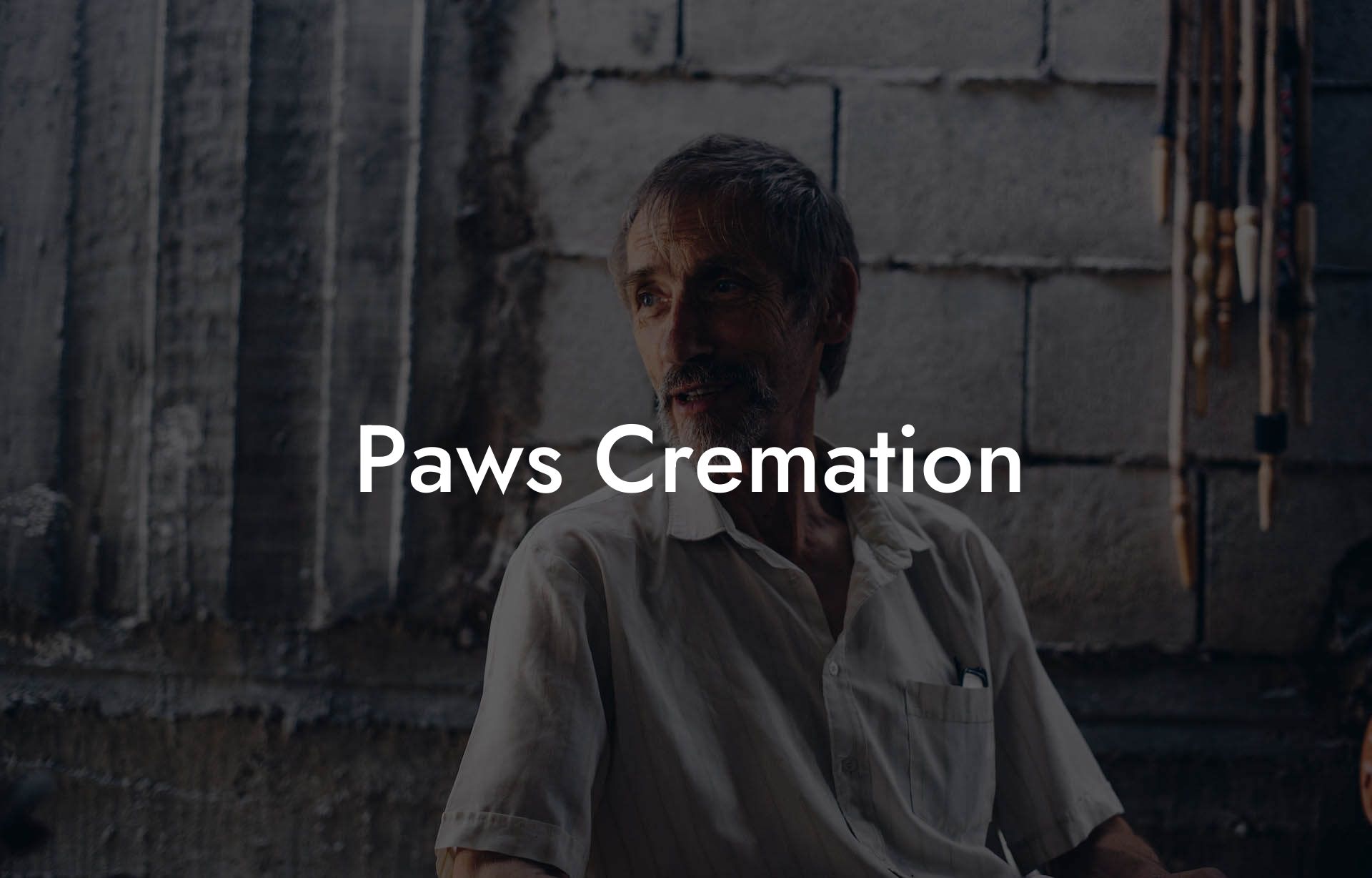Imagine a world where saying goodbye to a beloved pet is a celebration of life, love, and the unforgettable bond you shared. Welcome to the realm of Paws Cremation, where we honor the memories of our furry friends and provide comfort to those who are grieving. In this comprehensive guide, we'll delve into the world of pet cremation, exploring the process, benefits, and ways to memorialize your pet.
Quick Links to Useful Sections
What is Pet Cremation?
pet cremation is a dignified and compassionate way to bid farewell to your beloved pet. The process involves reducing your pet's body to its basic elements, resulting in a set of ashes that can be kept in an urn, scattered, or buried. Cremation is a popular choice for pet owners who want to ensure their pet is treated with respect and care, even in death.
Unlike traditional burials, pet cremation offers a range of benefits, including:
- Environmental friendliness: Cremation reduces the environmental impact of traditional burials, which can take up valuable land and resources.
- Cost-effectiveness: Cremation is often more affordable than traditional burials, making it a budget-friendly option for pet owners.
- Flexibility: Cremation allows you to choose from a variety of memorialization options, such as scattering, burial, or keeping the ashes in an urn.
The Pet Cremation Process
The pet cremation process typically involves the following steps:
- Collection: Your pet is collected from your home, veterinary clinic, or other location, and transported to the cremation facility.
- Preparation: Your pet is prepared for cremation, which may include cleaning and dressing them in a dignified manner.
- Cremation: Your pet's body is placed in a cremation chamber, where it is exposed to high temperatures, reducing the body to its basic elements.
- Processing: The ashes are processed and returned to you in an urn or container, along with any chosen memorial items.
It's essential to choose a reputable and licensed pet cremation provider to ensure your pet is treated with dignity and respect throughout the process.
Types of Pet Cremation
There are several types of pet cremation, each with its own unique characteristics and benefits:
- Private cremation: Your pet is cremated individually, and the ashes are returned to you.
- Partitioned cremation: Multiple pets are cremated together, but separated by partitions to prevent mixing of ashes.
- Group cremation: Multiple pets are cremated together, and the ashes are commingled.
It's crucial to discuss your options with your chosen cremation provider to determine the best fit for you and your pet.
Memorializing Your Pet
Saying goodbye to your pet doesn't have to mean saying goodbye to their memory. There are many ways to memorialize your pet, including:
- Urn selection: Choose from a variety of urns, ranging from traditional to decorative, to hold your pet's ashes.
- Scattering gardens: Designate a special area in your yard or a nearby park to scatter your pet's ashes.
- Memorial jewelry: Wear a piece of jewelry containing a small amount of your pet's ashes, keeping them close to your heart.
- Tree planting: Plant a tree in memory of your pet, symbolizing their life and legacy.
Remember, memorializing your pet is a personal and emotional experience. Take your time to explore the options and choose the one that resonates with you and your pet's memory.
Resources and Community Support: Your Next Steps
Losing a pet is never easy, but having a supportive community and resources can make a significant difference in your grieving process:
- Pet loss support groups: Join online or in-person support groups to connect with others who have experienced a similar loss.
- Counseling services: Seek professional counseling to help you cope with your emotions and navigate the grieving process.
- Online resources: Explore online forums, blogs, and websites dedicated to pet loss and memorialization.
Remember, you're not alone in your grief. Reach out to friends, family, and professionals for support, and take comfort in the memories you shared with your beloved pet.
Frequently Asked Questions About Pet Cremation
Here are some frequently asked questions about pet cremation:
1. Is pet cremation a dignified way to say goodbye to my pet?
Absolutely. pet cremation is a respectful and compassionate way to bid farewell to your pet, ensuring they are treated with dignity and care.
2. How long does the cremation process take?
The cremation process typically takes 1-2 hours, depending on the size of your pet and the type of cremation chosen.
3. Can I witness the cremation process?
Some cremation providers offer viewing rooms or private witnessing areas, allowing you to be present during the cremation process. However, this is not always possible, so it's essential to discuss your options with your chosen provider.
4. What happens to my pet's ashes after cremation?
After cremation, your pet's ashes are returned to you in an urn or container, along with any chosen memorial items. You can then choose to scatter, bury, or keep the ashes in a special place.
5. Is pet cremation environmentally friendly?
Yes, pet cremation is a more environmentally friendly option compared to traditional burials, which can take up valuable land and resources.

